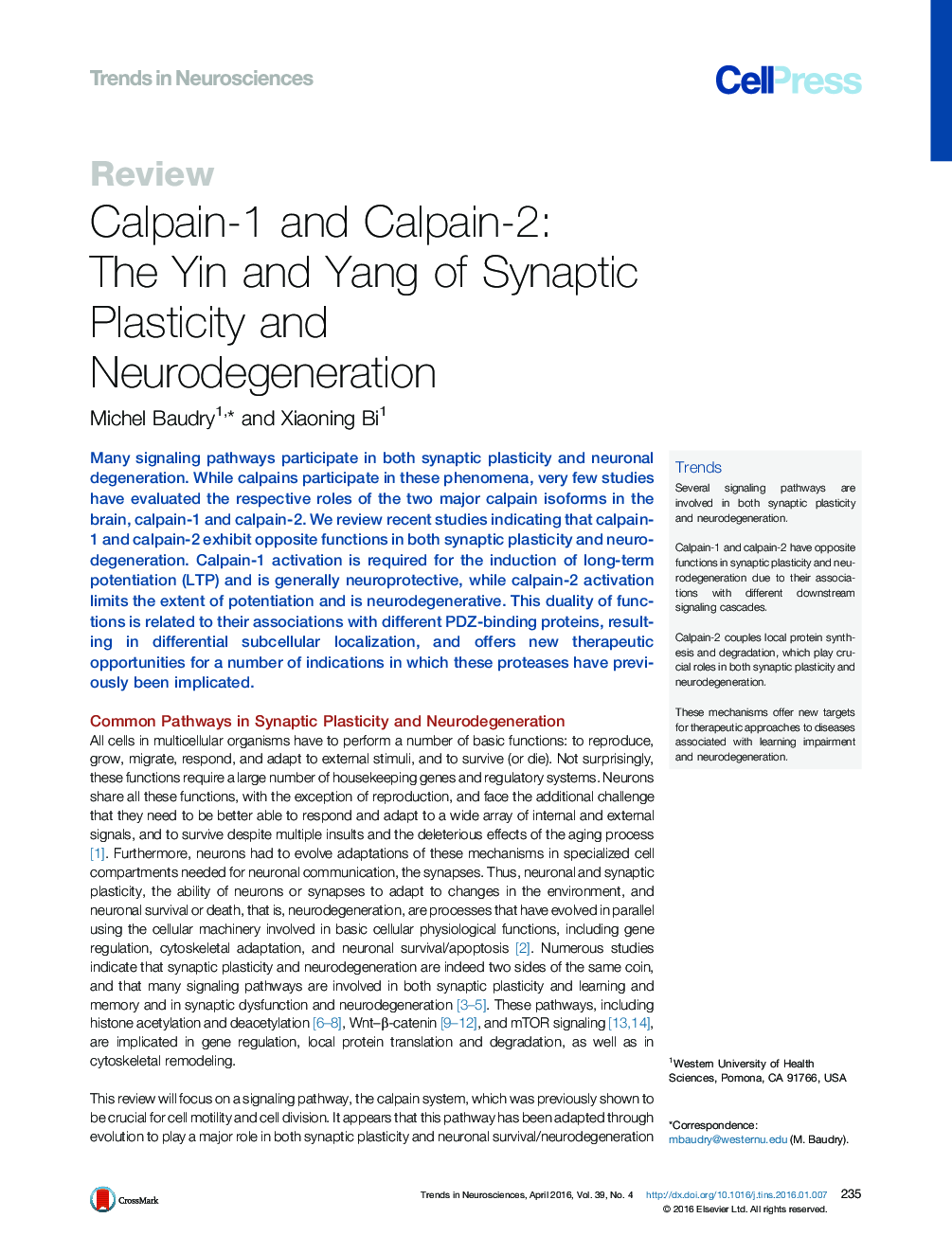| Article ID | Journal | Published Year | Pages | File Type |
|---|---|---|---|---|
| 4354150 | Trends in Neurosciences | 2016 | 11 Pages |
Many signaling pathways participate in both synaptic plasticity and neuronal degeneration. While calpains participate in these phenomena, very few studies have evaluated the respective roles of the two major calpain isoforms in the brain, calpain-1 and calpain-2. We review recent studies indicating that calpain-1 and calpain-2 exhibit opposite functions in both synaptic plasticity and neurodegeneration. Calpain-1 activation is required for the induction of long-term potentiation (LTP) and is generally neuroprotective, while calpain-2 activation limits the extent of potentiation and is neurodegenerative. This duality of functions is related to their associations with different PDZ-binding proteins, resulting in differential subcellular localization, and offers new therapeutic opportunities for a number of indications in which these proteases have previously been implicated.
TrendsSeveral signaling pathways are involved in both synaptic plasticity and neurodegeneration.Calpain-1 and calpain-2 have opposite functions in synaptic plasticity and neurodegeneration due to their associations with different downstream signaling cascades.Calpain-2 couples local protein synthesis and degradation, which play crucial roles in both synaptic plasticity and neurodegeneration.These mechanisms offer new targets for therapeutic approaches to diseases associated with learning impairment and neurodegeneration.
